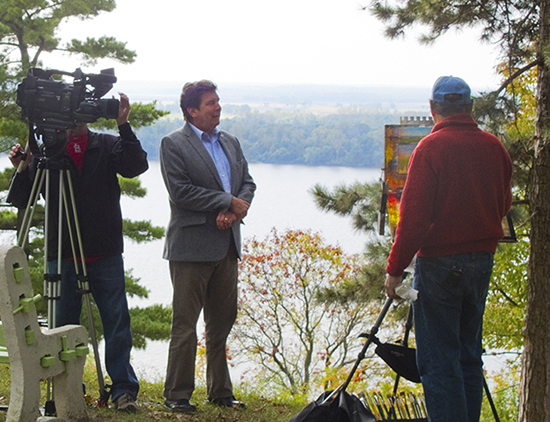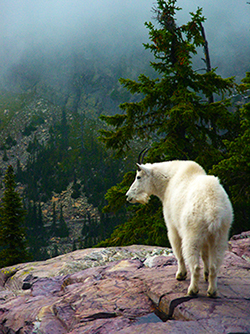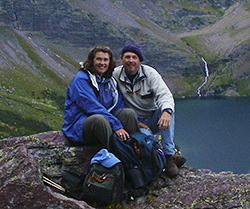Our Favorite 10 Easy-to-Access Painting Spots in Rocky Mountain National Park
|
Our Top 10 Favorite Easy-to-Access
Painting Locations in Rocky Mountain National Park With over 250,000 acres, Rocky Mountain National Park offers an immense diversity of gorgeous scenery. This article concentrates only on very easy-to-access spots in the most used northeastern area of the Park. We will be adding more information in future articles about prime painting locations that require more hiking as well as locations in lesser used areas of the Park.
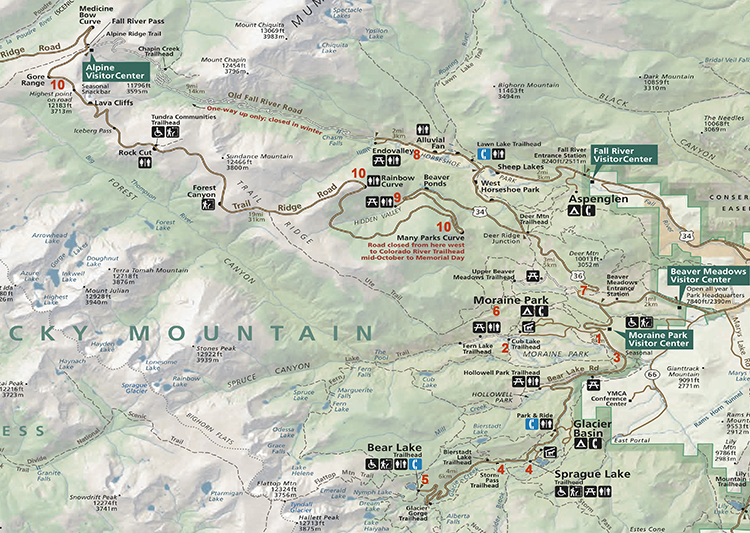 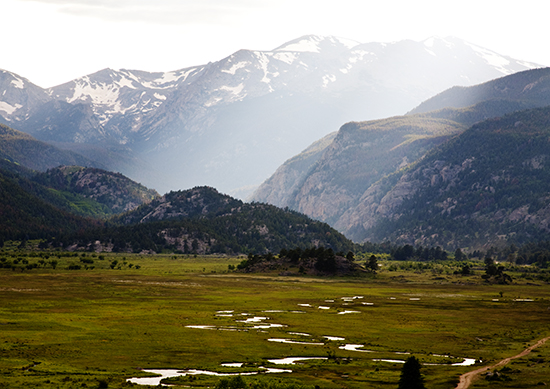 1. Moraine Park:
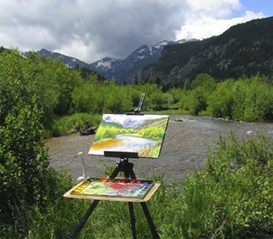 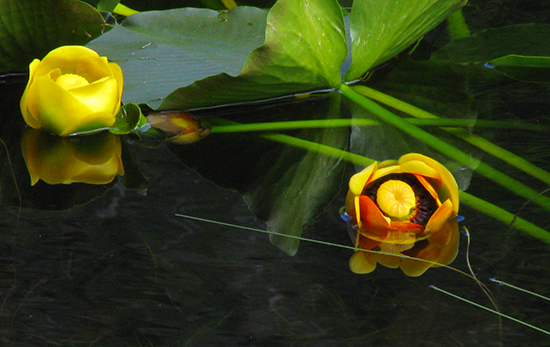 2. Cub Lake Trailhead: Because there is very little parking near the Cub Lake Trailhead, and it is a very popular spot, we recommend that you park at the Moraine Park Museum and take the shuttle to the Trailhead. Within a few feet of the parking area, you will cross a walking bridge. You can set up on either side of the bridge for a great view of the Big Thompson River as it winds its way west. The view is of Terratomah, Stones, Gabletop and the Little Matterhorn. Hikers will enjoy continuing up the trail to Cub Lake for a scene of yellow water lilies and the Front Range peaks reflected in the lake. The Cub Lake Trail is considered easy, but allow a half day for the 2.3 mile hike each way. 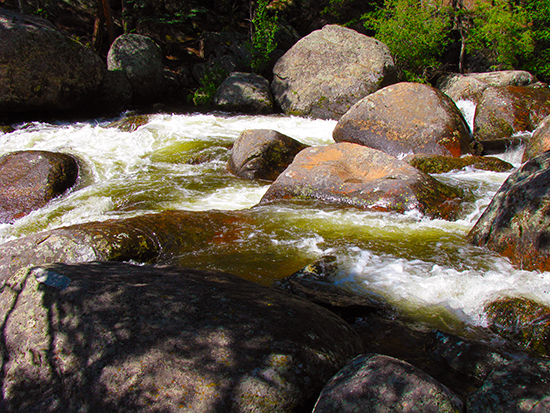 The boulders of the Big Thompson 3. The Big Thompson: The Big Thompson River winds its way throughout Rocky Mountain National Park providing dozens of beautiful locations for painting. It has many moods, from thundering boulder-filled falls to serene marshy fishing spots. Continue on the road past Moraine Park to find massive boulders and crashing waves. Park in designated spots along the road. Capturing the swift movement of water over rocks is an exhilarating challenge. Signs caution not to get too near to the slippery rocks. Take them seriously. 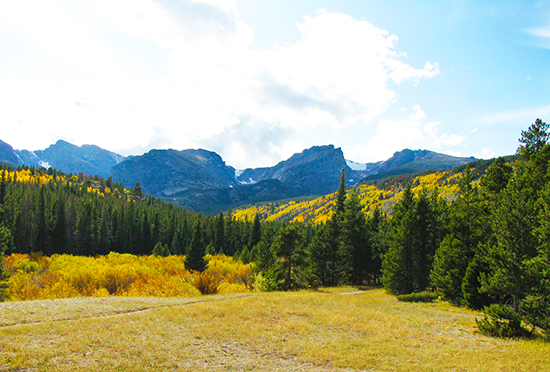 View from Storm Pass Trail in autumn 4. Sprague Lake and the View of the Front Range: Continue past Moraine Park and the entrance to Glacier Basin on the Bear Lake Road to the Sprague Lake Trailhead. Parking is provided. Walk the short distance to Sprague Lake. It is a great view of the Front Range including Otis, Hallett’s and Flattop Peaks. The lake provides a nice reflection of the peaks. Another equally good view, but with a meadow and trees in the foreground is the Storm Pass Trailhead, located just a bit further along Bear Lake Road. There is trailhead parking right off the road. A short walk will bring you to an open grassy hillside, which gives a clear view of the Front Range, with grasses in the foreground, pine trees in the mid ground and the peaks of the Front Range in the background. In the fall, the aspens covering the south face of Bierstadt Moraine to the right will show their glorious golden colors. 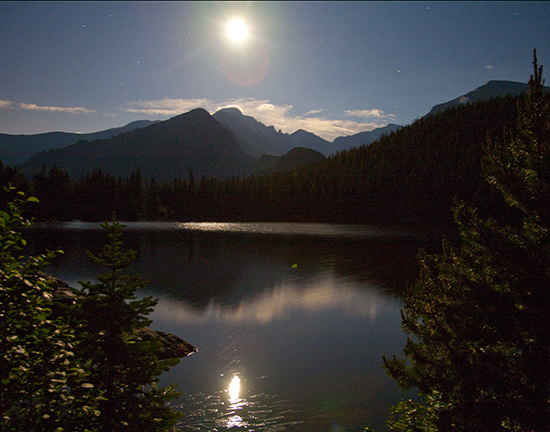 Bear Lake at midnight
5. Bear Lake at Night: Bear Lake is a crowded destination, probably the most popular in the Park. If, however, you are interested in painting a nocturne, it is easily accessible in the dark(with asphalt walkways) for full-moon painting. The moon provides excellent reflections on the still water of the lake. Of course, use extra caution at night and keep an eye and ear out for animal life. 6. Trail to a Moraine Park Overlook: After entering the Park from the Beaver Meadows Visitor Center, continue straight on Highway 36. As the road veers to the right, turn left onto a dirt road that will take you to the Upper Beaver Meadows Trailhead. Parking is provided. Follow the Old Ute Trail about a mile. On your left, look for an opening in the trees which will lead you to a rocky outcrop with a fantastic view to the southeast of Moraine Park, providing a great place to paint. (For backpackers, the trail continues much further to the Windy Gulch Cascades and Tombstone Ridge eventually joining Trail Ridge Road.) 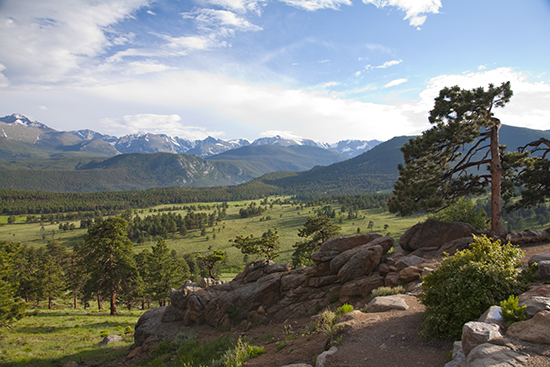 Beaver Meadows Overlook 7. Beaver Meadows Overlook: Continue north on Highway 36 to a loop in the road. There is a pull-out on the left side of the road which affords a beautiful view overlooking Beaver Meadows. 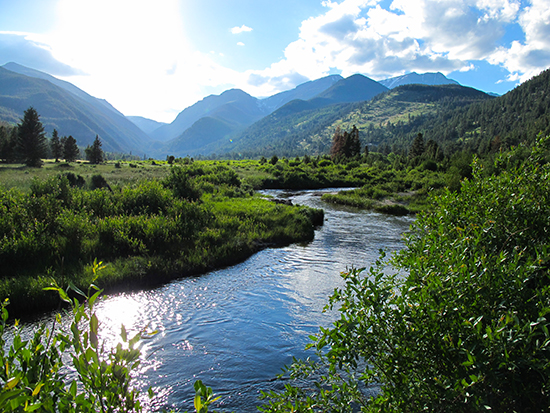 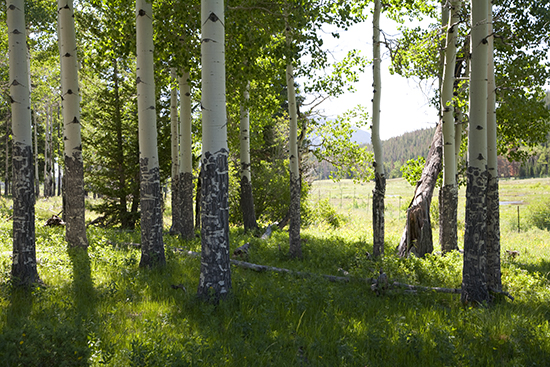 Fall River and aspens in West Horseshoe Park 8. The Aspen Trees of West Horseshoe Park: Travel north from the Beaver Meadows Visitor Center on Highway 36 to Horseshoe Park. Turn west toward the Alluvial Fan. A short way past the Alluvial Fan is a beautiful stand of heavily scarred aspen trees and a picnic table. There is a pullout for parking on the south side of the road. (Alternatively, enter the Park from the Fall River Visitor Center on Highway 34.) There is a wonderful light in the open grassy meadow created by the cathedral-like forest of aspen trees. Their smooth light-colored trunks catch and reflect the colors of the light shining on them. A trail going right by the spot goes down to the Fall River providing access to fly fishermen and artists alike. Summer can bring a carpet of wildflowers. 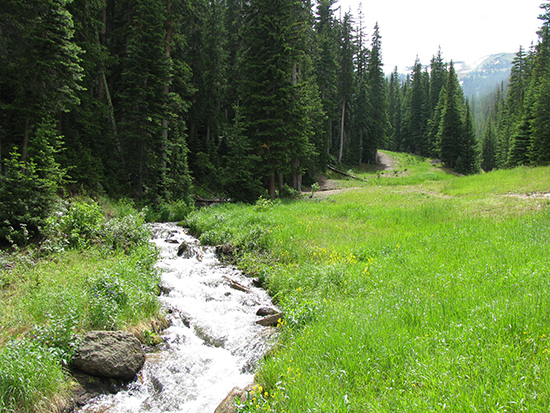 Photo of Engelmann Spruce in Hidden Valley 9. Hidden Valley: Take Highway 36 north to Deer Ridge Junction where it joins Highway 34. Continue on 34 (Trail Ridge Road) to Hidden Valley (on your right). It is a subalpine valley and formerly the site of a downhill ski area. There is a year-round visitor use facility, picnic tables and a winter snow play area. Hidden Valley provides opportunities for beautiful winter (and all-season) painting, with very tall, very vertical Engelmann Spruce trees framing the slopes. The streams cascading down through the trees are also prime painting real estate. 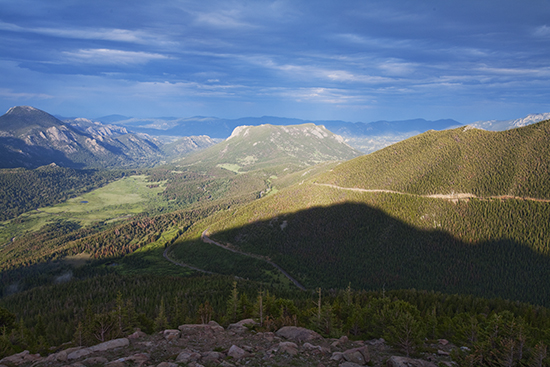 Photo of the view from Many Parks Curve 10. Trail Ridge Road: Trail Ridge Road provides numerous excellent painting sites. A couple of the most spectacular views are from Many Parks Curves (just after Hidden Valley). There is ample parking, but be careful as you cross the oncoming lane to get into the parking are. The views are of both Moraine Park, Beaver Meadows and Horseshoe Park. Sunrise is sublime. From Many Parks Curve west, Trail Ridge Road is closed from mid-October to June. For a sunset view, both Rainbow Curve and the Gore Range pullout are great. Because Rainbow Curve is at a much higher altitude as you drive up Trail Ridge Road, the trees are exposed and blasted by wind and ice creating interesting gnarled forms for painting. 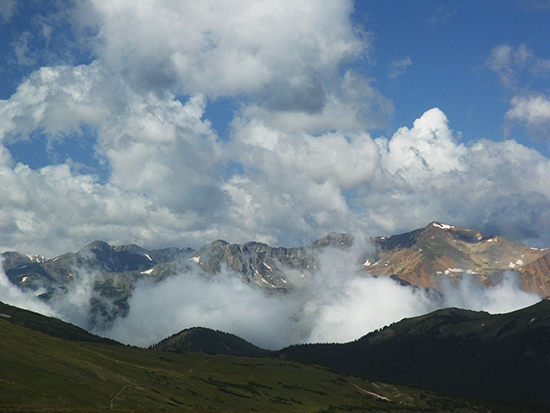 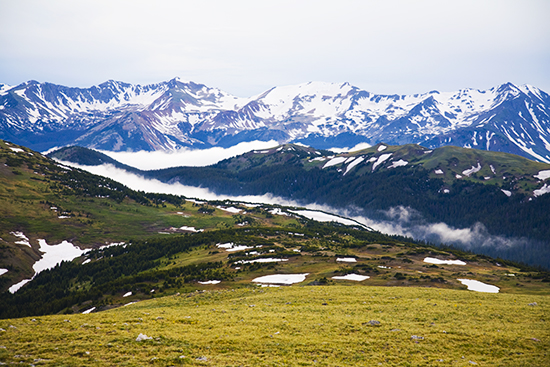 Photos of views from Trail Ridge Road pull-outs From the National Park Service: “Altitude sickness is common among park visitors. Consult your doctor if you have a respiratory or heart condition. Natural hazards in the park include swift water, waterfalls, lightning, sudden changes in weather, hypothermia, and giardiasis from drinking untreated water. While driving, watch for wildlife crossing roads.” “Vehicles must stay on roads or in parking areas. Stopping or parking on roads is prohibited. Do not feed, approach, or try to touch any wild animals. Leave wildflowers and other plants for others to enjoy. Open alcoholic beverage containers in a vehicle while on park roads are illegal.” “For detailed information or emergencies, call 970-586-1206 during business hours. At night, call 970-586-1203 or 911.” More information is available at: www.nps.gov/romo 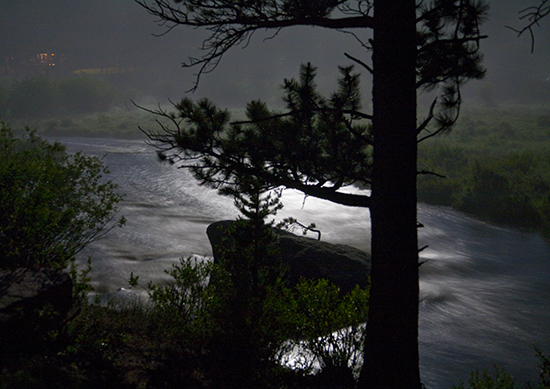 Photo of RMNP at night |
Become an Artist's Road Member Today!
Already a Member?Log in here. To renew your membership, log in and follow the links. Search the SitePerspectivesNot ready to become a Member yet? Subscribe to our free email postcards, "Perspectives". Enter your email address here.
Member ContentFree ContentThe Artist's Road StoreNocturnes - A Primer on Night Painting Filled with inspirational examples by the masters of nightime painting, this little book is sure to fire up your creative energies. Never tried painting at night? We show you how it's done with a step-by-step-oil demo and a tale of night painting in the wilds of Rocky Mountain National Park. The Primer on Night Painting - Nocturnes is a 7 x 7" PDF download with 40 pages of text and images. It includes a gallery of paintings by masters of the nocturne, information to inspire and encourage you in your plein air nocturne painting, an illustrated step-by-step demo and tips for working in pastel and oil. Also available in a softcover edition. Check out the tools and other products that we use in our own art and travels in The Artist's Road Store. We only offer things for sale that we enthusiastically believe in.
About Us
|
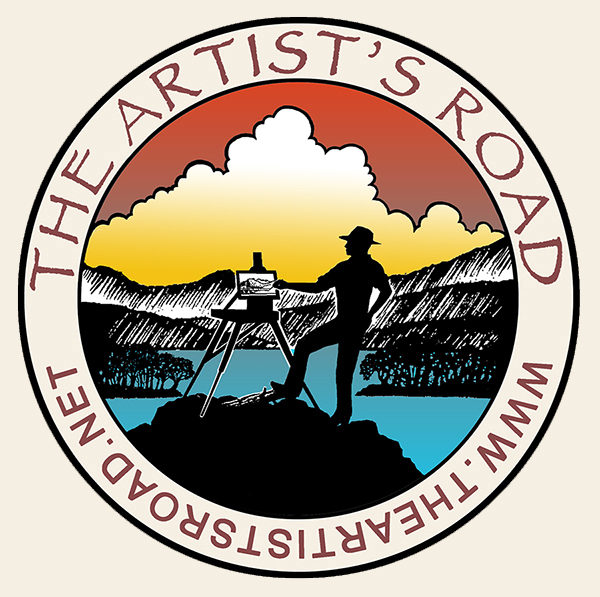
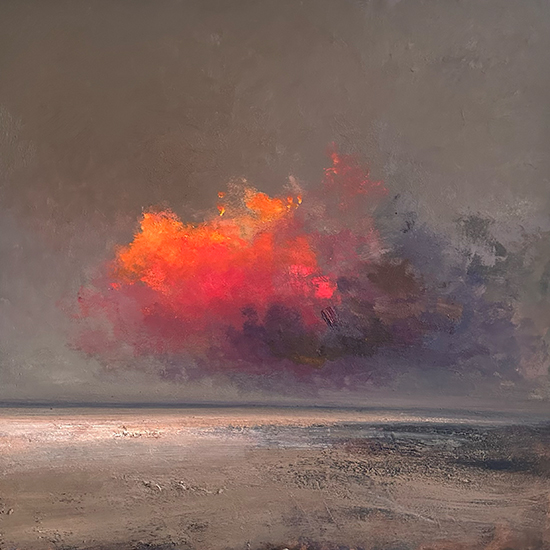 Voices of Experience:Richard K. Blades
Voices of Experience:Richard K. Blades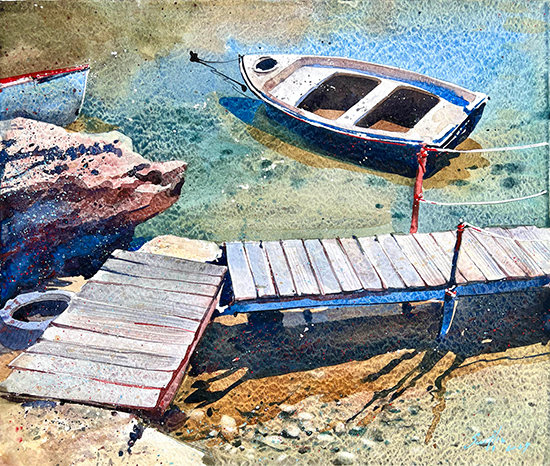
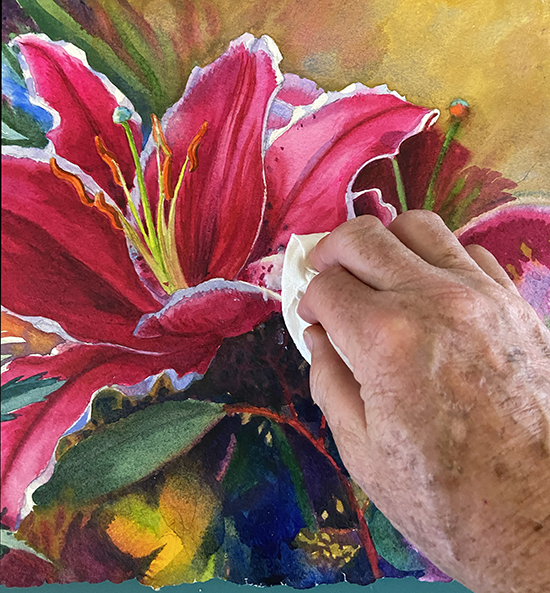 ing Watercolors
ing Watercolors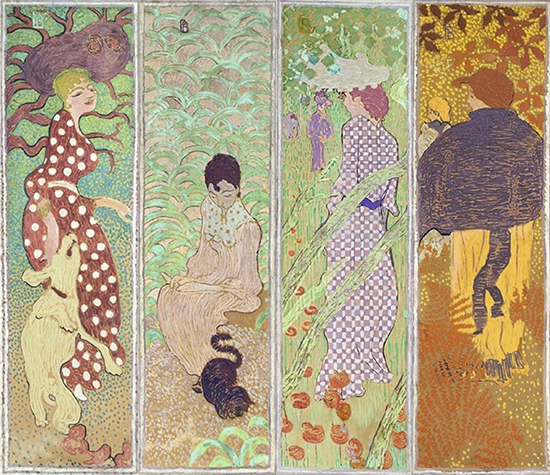
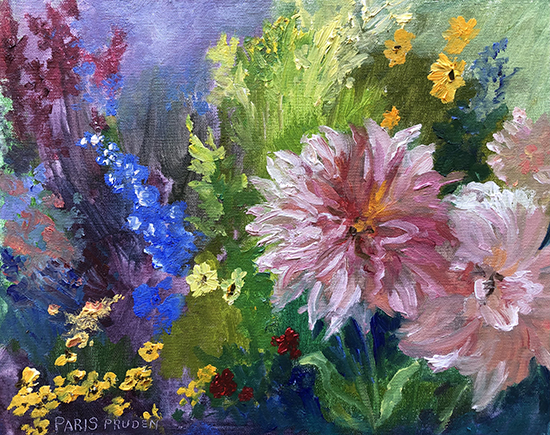
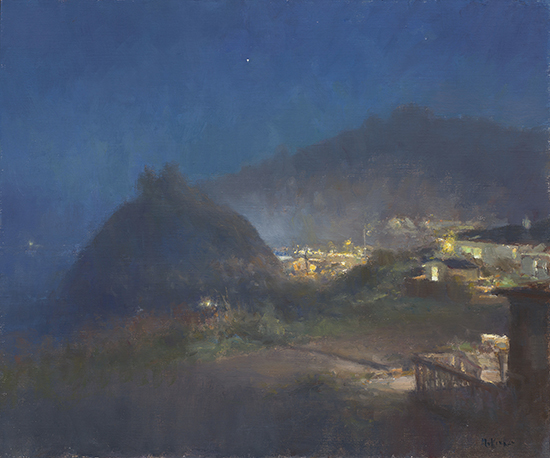 Nocturne Notes
Nocturne Notes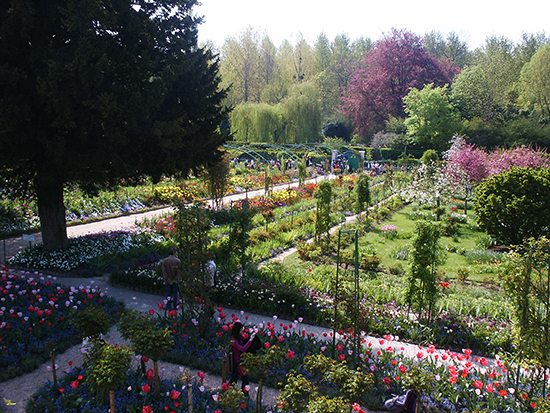 Inspiration in Monet's Gardens
Inspiration in Monet's Gardens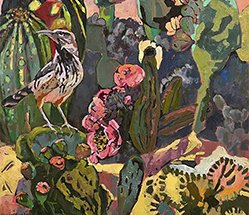
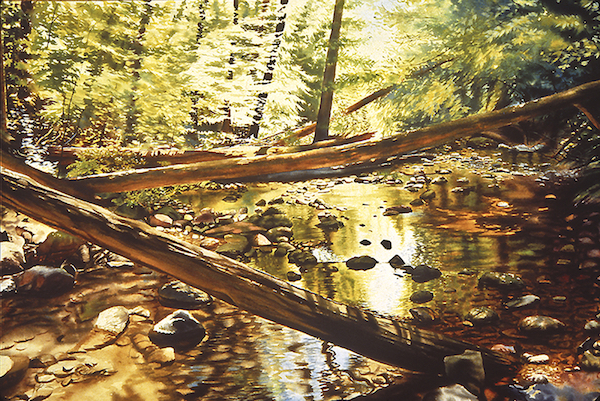 The Watercolor Medium
The Watercolor Medium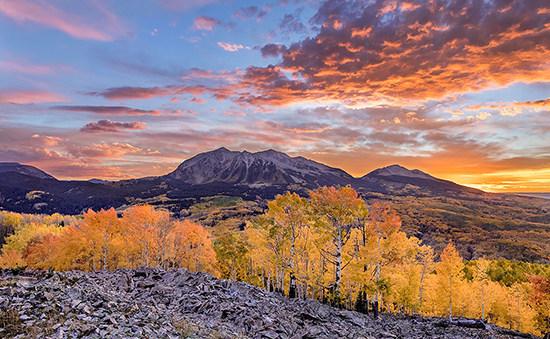
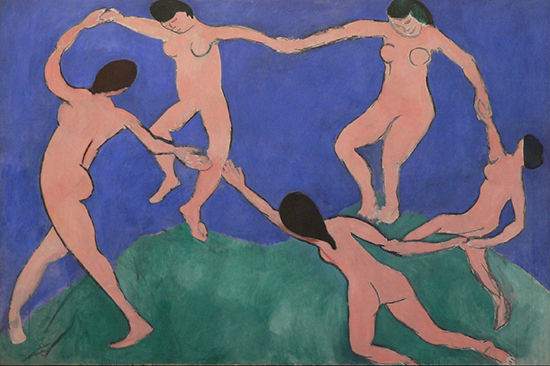 The Perspectives Archive
The Perspectives Archive